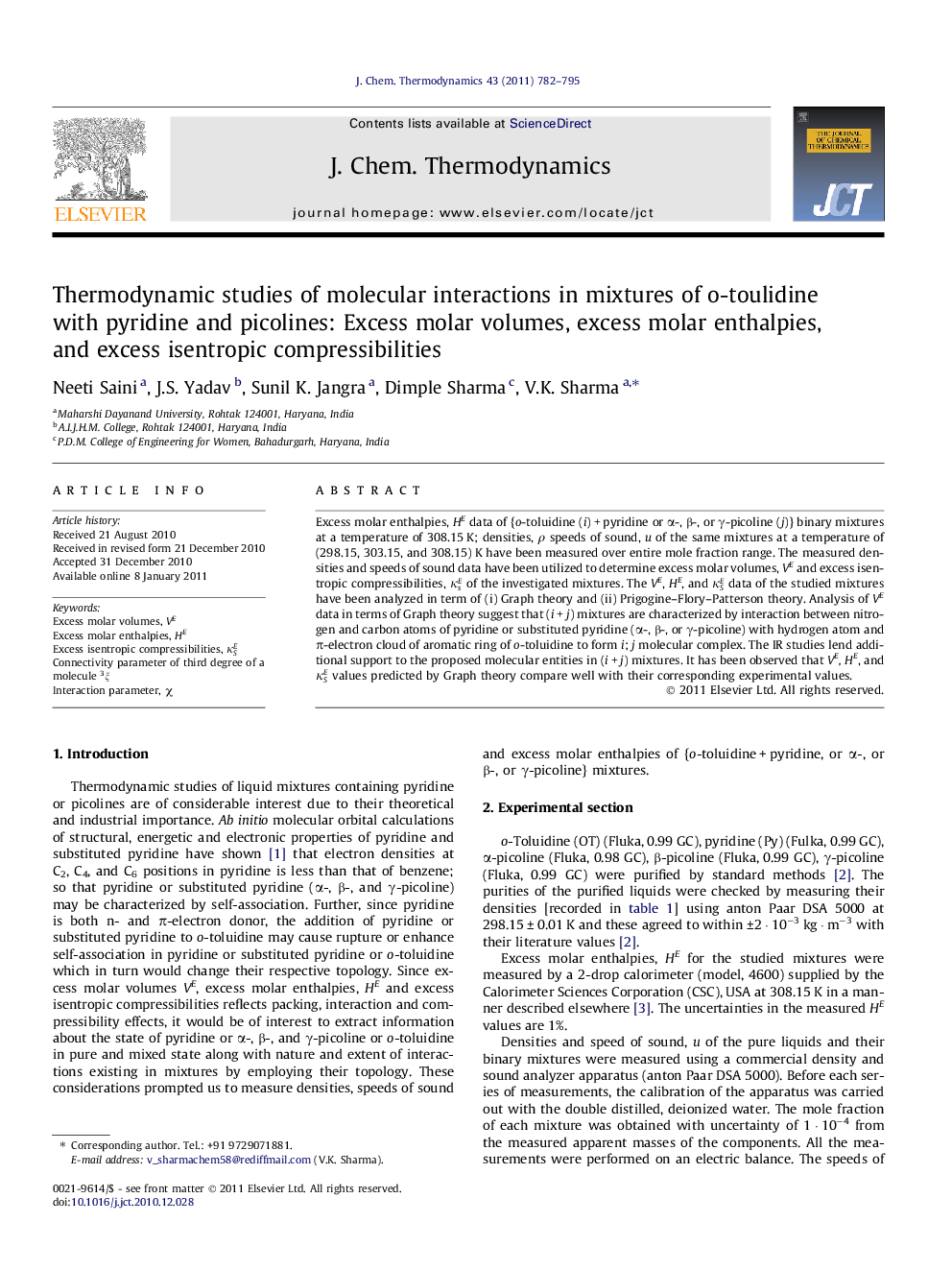| Article ID | Journal | Published Year | Pages | File Type |
|---|---|---|---|---|
| 216355 | The Journal of Chemical Thermodynamics | 2011 | 14 Pages |
Excess molar enthalpies, HE data of {o-toluidine (i) + pyridine or α-, β-, or γ-picoline (j)} binary mixtures at a temperature of 308.15 K; densities, ρ speeds of sound, u of the same mixtures at a temperature of (298.15, 303.15, and 308.15) K have been measured over entire mole fraction range. The measured densities and speeds of sound data have been utilized to determine excess molar volumes, VE and excess isentropic compressibilities, κsE of the investigated mixtures. The VE, HE , and κSE data of the studied mixtures have been analyzed in term of (i) Graph theory and (ii) Prigogine–Flory–Patterson theory. Analysis of VE data in terms of Graph theory suggest that (i + j) mixtures are characterized by interaction between nitrogen and carbon atoms of pyridine or substituted pyridine (α-, β-, or γ-picoline) with hydrogen atom and π-electron cloud of aromatic ring of o-toluidine to form i; j molecular complex. The IR studies lend additional support to the proposed molecular entities in (i + j) mixtures. It has been observed that VE, HE , and κSE values predicted by Graph theory compare well with their corresponding experimental values.
Research highlights► Excess molar enthalpies, HE data of o-toluidine (i) + pyridine or α-, β-, or γ-picoline (j) binary mixtures at a temperature of 308.15 K; densities, ρ and speeds of sound, u of the same mixtures at a temperature of 308.15 K have been measured over entire mole fraction range. ► The experimental densities and speeds of sound results have been utilized to determine excess molar volumes, VE and excess isentropic compressibilities, κSE of the investigated mixtures. ► Connectivity parameter of third degree of a molecule (which in turn depends upon its topology) have been employed successfully (Graph theory) to determine excess properties of the studied ternary mixtures. ► The observed VE, HE and κsE data of the investigated mixtures have also been analyzed in terms of Prigogine–Flory–Patterson (PFP) theory.
